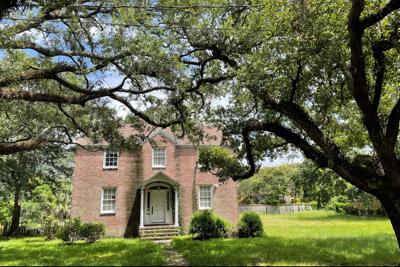Media Coverage
Editorial: Charleston preservation can happen even without a law in place — on good days
preservation-admin , October 20, 2022
Read the original Post and Courier article here.

When several West Ashley residents grew concerned about plans to demolish a historic home at 8 Stocker Drive, it appeared there was little they could do about it. After all, neither Charleston’s Board of Architectural Review nor its Design Review Board has any jurisdiction inside the early 20th century neighborhood just southwest of Savannah Highway and Folly Road.
But sometimes, all it takes is to make your voice heard — and treat a developer not as an enemy but as a potential friend who might come around to your point of view. And to rally more troops. Fortunately, all of that happened in this instance in the short time between when the city issued a demolition permit for the 1940s house and when the actual demolition was set to start.
News of developer-owner Brian Wells’ original demolition plan led concerned residents, particularly Allisyn Morgan and Ashton Finley, to try to find a better way. They met with Mr. Wells, sought out publicity and soon broadened the discussion to include preservation groups, Mayor John Tecklenburg, Councilman Ross Appel and Old Windermere neighbors. They ultimately found that better way.
Their deal was sealed earlier this month when the city’s Board of Zoning Appeals voted to approve three lots on the double-lot-sized parcel, even though the new lots do not meet the minimum 74-foot frontage rule. The lots’ side setbacks also were allowed to be a few feet shorter than normally required. Those approvals granted to Apostle Holdings LLC and Mr. Wells are contingent on the revocation of the city’s demolition permit and the renovation-expansion of the existing house at 8 Stocker. A separate zoning board agreed to the removal of one large tree.
The Preservation Society of Charleston, which worked with residents interested in saving the house, chalks this up as a win. “Established as an early 20th century suburb, the Old Windermere neighborhood represents a crucial era of development in Charleston’s history,” it noted. “8 Stocker is one of the houses dating to the neighborhood’s early phase of construction that helps convey its unique sense of place. For so long, the city has concentrated preservation efforts on the peninsula, and cases like this are sparking important conversations about expanding protections for historic resources in the suburban areas of Charleston.”
As comforting as the outcome at 8 Stocker may be, it’s important that those conversations continue, particularly in Old Windermere, one of West Ashley’s older and more intact neighborhoods. Given its age, development pressures and heightened awareness from the Stocker Drive saga, any solutions found to help protect Old Windermere could serve as a blueprint for others.
Charleston has many neighborhoods beyond downtown that feature homes with a common architectural language built more than 50 years ago, the approximate time beyond which a building might be considered historic and worthy of preservation attention. Importantly, it’s not simply the individual homes that are worth caring for but also the collective appearance of these neighborhoods themselves. Replacing an older home with a larger, different looking one can taint the ambiance of a whole street.
We’re not going to pretend we know all the answers about which neighborhoods should get what sort of protections, but we feel certain that those answers can emerge eventually as residents continue talking with city officials, the preservation community and other experts. The same grassroots activism that helped make Charleston a national preservation leader a century ago — and that altered the fate of this Stocker Drive home — should continue. That activism should lead to actions that will reduce future demolition dramas and assure the city’s signature preservation ethos safeguards older neighborhoods well beyond the city’s historic core.
After all, the next developer with a demolition permit in hand might not be as willing to talk.
